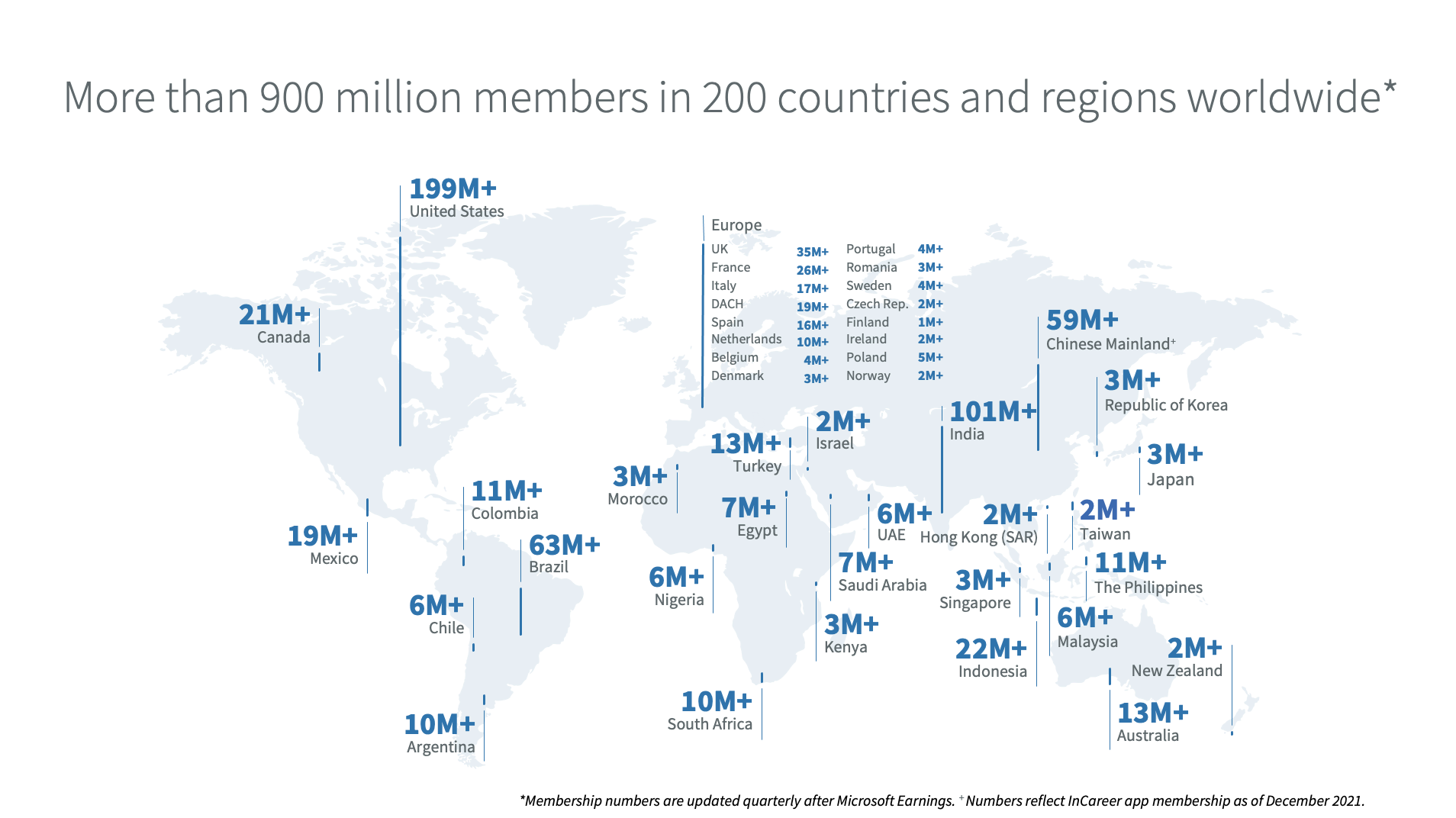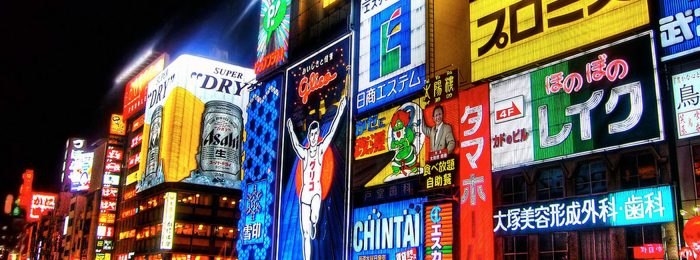LinkedIn is the obvious choice when it comes to B2B marketing in the US. Not only is it a great place to target senior stakeholders and C-suite executives, it also serves as a hub for brand awareness, credibility, and community building. But how do brands do this on a global level?
With over 65 million business decision-makers in over 200 countries and 26 languages, LinkedIn is a powerful tool for global B2B marketers.
Succeeding on LinkedIn requires commitment and consistency. Keeping on top of your content creation, community engagement, and status updates can feel overwhelming. But if you’re not taking advantage of the international opportunities that LinkedIn can present for your brand, you’re missing out on a compelling marketing platform.
Here are five things to keep in mind when expanding globally on LinkedIn.
1. YOUR INTERNATIONAL TARGET AUDIENCE
LinkedIn is the dominant global B2B social media network, and for most international markets, the best one to use to engage business users. But in some countries, LinkedIn’s reach may be limited.
So, you’ll want to do your research. Different countries use different B2B social platforms, and there’s no one-size-fits all approach to a global social media strategy. For example, Xing is a popular business and career social media platform in Germany. Japan users prefer Facebook for B2B marketing, and Zyapaar is a key business networking platform in India.
Market research, audience profiling, and on-the-ground insights are crucial for determining where to reach your in-country B2B audience. (And how to create content that resonates with them and addresses their pain points.)

Source: LinkedIn
2. YOUR PROFILE: REGIONAL OR GLOBAL?
The way you set up your LinkedIn account will depend on your goals. Are you trying to get users to buy your product? Do you want to establish yourself as a corporate authority? Build an international community? Your vision and goals for using LinkedIn will determine how you set up and manage your account.
ONE GLOBAL PROFILE
Hilton Hotels uses various Instagram profiles that appeal to each region. Which makes sense as they’re selling the local appeal, tour activities, as well as a place to call home while exploring a new country.
However, they have only one profile on LinkedIn, featuring globally relevant content that appeals to a broader audience. Their posts also tap into regional markets, securing brand awareness in pockets across the world.
Hilton is primarily focused on B2C marketing (and achieves bookings on Instagram, which is better suited for that type of conversion). So one profile on LinkedIn that showcases Hilton’s global updates makes more sense over managing several regional profiles.
LinkedIn is a chance to keep potential customers up-to-date and engaged with your worldwide progress – and that’s why a single profile approach works well if you’re a B2C brand like Hilton.
SEVERAL REGIONAL PROFILES
You’ll want to opt for a regional profile strategy when you want to really hone in on your in-country target audiences.
Scandit, a leader in smart data capture and barcode scanning from Zurich, has two LinkedIn profiles. One aimed at English speakers in Europe and the US and one in Spanish for Latin America (LATAM). LATAM is a large market for them, so it makes sense to prioritize a profile to appeal directly to decision-makers in these regions.
Arriva is another company championing regional LinkedIn profiles. They’re a leading passenger transport company operating in 12 countries. With over 10 profiles in various regions, they’re targeting their desired audience in each market with locally relevant content.
If your goal is to generate B2B leads – regional or office-based profiles can be a smart option.
3. YOUR CONTENT
Your approach to content will depend on your overall global marketing strategy and goals. If you decide to manage your brand on the regional level, how can you make sure your content is localized and in your primary audiences’ native language? Hint: you’ll want to work with in-country subject-matter experts to ensure you’re authentically connecting to your target audience.
You might be tempted to take full ownership of creating all social content for all global markets. Then localize it yourself and expect each market to post the translations you provide.
But centrally translating your US LinkedIn content for international audiences is ultimately a flawed approach. Social media is inherently, well, social. And conversation is driven by the trends, culture, and behavior of the local market. With a US-centric approach, you’ll have less flexibility to cater content to each market and audience – potentially robbing your brand of the authentic connection users are expecting.
If you don’t have the bandwidth or in-country resources to create original, in-language content for social, don’t fret. The right marketing localization partner will work with you to create engaging content – whether it’s translated, transcreated, or written from scratch. The goal is to connect with local audiences through a relevant, authentic social experience. And the right partner will know how to do just that.
PROFILE KEYWORDS
Much like traditional search engine research, industry professionals and key decision-makers use LinkedIn’s search function to find who or what they’re looking for. Therefore, local-language keyword research and optimization is just as important for LinkedIn as it is for SEO.
Make sure your profile description is up to date with keywords that reflect your niche and that your content is optimized to pop up in the search results. (And make sure you don’t just translate those keywords. Work with in-country experts who can identify keywords and phrases specific to each market based on local LinkedIn search trends.)
VIDEO
The global average consumption of videos is 100 minutes a day. And in social media, it’s one of the most engaged-with content formats. On LinkedIn, video posts are shared 20x more often than other post types.
Your approach to video will depend on your budget, your resources, and your in-market audience’s video preferences. As with other pieces of content, some of your domestic content may be appropriate for localization (subtitling, voiceover, and/or dubbing). Many countries have clear preferences when it comes to localized video. France and Germany, for example, tend to prefer dubbing, whereas Belgium and Norway prefer subtitles.
But the nature of social is to be responsive and timely to the local market. So for some countries you may need original, in-language video geared specifically to that country’s trends and preferences.
Your marketing localization partner will help you navigate your video strategy for LinkedIn, balancing your budget with market expectations around video content. And it doesn’t have to be an all-or-nothing endeavor. Start by testing the waters with video, focusing on less (but more relevant) content for your target countries. Then iterate and expand as you learn. The key is authenticity, relevance, and engagement – not volume.
4. YOUR COMMUNITY ENGAGEMENT
Community is key in connecting with your intended audience in the places where they show up. Make sure you have a native speaker on point (and trained in your brand’s tone of voice) to engage with posts, respond to comments, and join groups where your target audience spends time.
Community engagement on LinkedIn can be a full-time job in itself. Finding the right community managers for each international market is key to success on the platform. These on-ground experts can provide critical insights to elevate your LinkedIn strategy.
5. YOUR PAID ADS
LinkedIn ads have the power to reach 14.6% of the world’s population. And their parameters are hyper-specific, so you can choose who sees your ads, raise brand awareness, and drive lead gen in your key markets. You can target based on region, age, company demographics (e.g. industry, size, revenue), job titles, skills, and more.
Part of the setup should include defining specific goals for each campaign. Do you want to increase brand awareness because you’re entering a country with little familiarity with your brand? Do you need to provide education around your key services? If you’re competing in a saturated space, how can your ads help you stand out from the competition? Establishing specific goals – and specific ways to measure them – will help set you up for success.
You also need to think through the full customer journey, creating a consistent localized experience from ad copy/visuals to landing pages. You don’t want to create a jarring experience by having an ad in French lead to a landing page in English. And you’ll want to ensure that whatever action you want the person to take is easy and straightforward. Here, the little things matter. Like the labels on your form fields or a confirmation email. Make sure that every step on the user journey from your ads is relevant – and localized.
Leverage insights from in-market social media experts as you set up a variety of campaigns. They’ll know the different types of copy to test and the types of imagery that will resonate best. They’ll also know if it makes sense to localize your US ads or create them from scratch for each market. As with any paid efforts, be sure to test, measure, iterate, and expand. With the right partner, your ads will resonate with your target audience and achieve the results you’re after.
PRIVACY LAWS & LINKEDIN ADVERTISING
Because of privacy laws, some LinkedIn advertising features – like ad types or targeting methods – won’t be available to you in some international markets. (Or, their effectiveness may be limited.) These decisions evolve over time, so be sure to keep an eye out for changes and be ready to pivot as needed.
FINAL THOUGHT
LinkedIn marketing, when done right in the global markets you’re targeting, can skyrocket lead generation and brand awareness. As a B2B marketing platform, it provides a lot of tools to connect with new international leads or engage existing customers. And, it should form part of your global social media strategy.
From market research and a social media platform audit to content strategy and community management – you can ensure your international customer journey is appropriately localized for each of your global target audiences.
Ready to dive into LinkedIn as part of your global marketing strategy? Want to find out which platform is best suited for your B2B international goals? Get in touch now.




